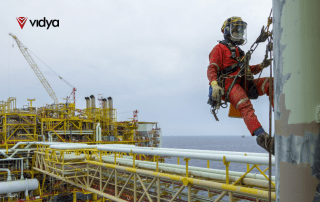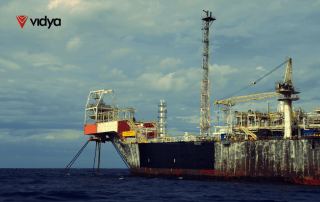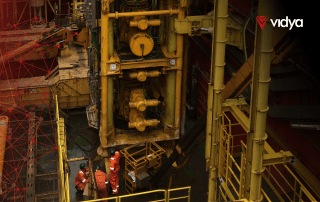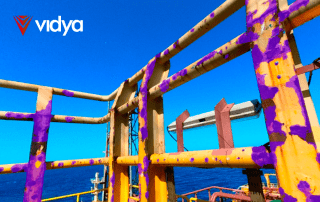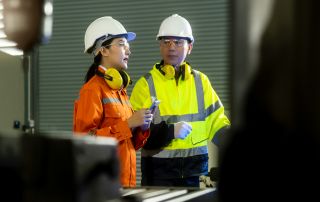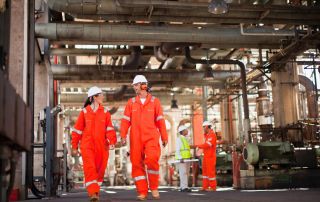Understanding Dropped Object Prevention for Energy Industries
In 2016, dropped objects from Offshore Oil facilities resulted in 255 worker fatalities in the United States, according to the Bureau of Labor Statistics, an alarming statistic that made clear the urgency of a curious, but important safety protocol that industries needed to adopt: fighting gravity. However, these incidents are far from inevitable and can be significantly reduced through a robust Dropped Object Prevention program. And, considering the scale and complexity of the energy industry’s operations, these programs became a fundamental piece of Industrial Safety and Risk Management. But what defines a Dropped Object? What is a Dropped Object? [...]
How to optimize Industrial Safety and Risk Management
The International Association of Oil and Gas Producers reported a 36% increase in offshore fatalities from 2020 to 2021. This concerning rise underscores the inherent safety challenges of the industry. Certainly, this sector is subjected to safety threats due to the complex processes and hazardous environments in which it operates. For this reason, high-complexity facilities such as oil and gas need to target safety and risk assessments as fundamental pieces of operational management. But what are the main concerns of the oil and gas industry regarding risk management? Concerns regarding risk management in the O&G Industry [...]
The Future Lies in the Past: Embracing Mature Fields for Tomorrow’s Energy
A 2011 study by IHS Cambridge Energy Research Associates reported that approximately two-thirds of global daily average oil production comes from mature fields and that the percentage is increasing over time. Indeed, it’s evident that mature fields have become a fundamental piece of the petroleum exploration sector, but what exactly are mature fields? According to Parshall (2012), mature fields are defined by years of production and aging infrastructure. For a field to be considered mature, it had to produce more than 50% of its established proved plus probable resource estimates or have produced for more than 25 years. In this [...]
Exploring the Depths: Understanding Offshore Oil Drilling
Until 1894, we didn’t know extracting crude oil from subsea environments was possible. This changed when the lure of offshore production enticed Henry L. Williams and his associates to build a pier 90 meters out into the Pacific — and assemble a standard cable-tool rig on it. Since then, oil extraction has evolved in unprecedented ways. In recent years, new technologies have emerged as powerful tools for addressing the inherent challenges of exploring previously unreachable resources. Indeed, subsea drilling still represents a complex operation that requires advanced techniques and skilled teams to achieve optimal efficiency and safety. And, despite the [...]
How to leverage the full potential of AI Predictive Maintenance
Industrial maintenance is a crucial but challenging aspect of large-scale process industries. Traditional maintenance methods result in expensive, risky, time-consuming, and often inefficient activities. This has led to a growing implementation of digital technologies to optimize maintenance, which made clear the opportunities that these optimized processes offered, like foreseeing anomalies with predictive maintenance for example. However, successfully implementing this maintenance approach requires the integration of different cutting-edge technologies. Despite the complexity surrounding the adoption of predictive maintenance, we need to understand its leveraged opportunities in industrial environments. Why industrial maintenance requires predictive care Industrial maintenance can be a [...]
AI-driven Hull Inspections: Streamlining Safety and Efficiency
Vessels are crucial parts of different industrial operations. Considering this, the ship's main body: the hull, must be regularly inspected to ensure high asset integrity, safety, and efficiency standards. Hull damages such as cracks can lead to oil leaks, which can implicate direct emergency costs that surpass USD 50,000,000 according to Brazil's National Petroleum Agency, which is 100x more expensive than the investment to repair the defects on time (before the accident) not including compensations, fines, and asset depreciation. In this regard, hull inspections are a maintenance procedure that helps energy companies and bulk cargo transporters maintain high safety, compliance, [...]
Making the most of POB on offshore assets
As a risky environment, Oil and Gas offshore operations claim meticulous interventions from the People on Board (POB). The term is used to track and manage the workforce and ensure safety, resource allocation, and overall operational efficiency. In this sense, managing People on Board (POB) it’s a crucial and inherent challenge to the oil and gas industry. Oil and gas facilities may present risks such as explosions, health hazards, and oil leaks. Besides that, unplanned events happen, which requires workers to solve the occurrence. This harms the planning of the POB previously done and increases the downtime of the asset, [...]
Smart Hulls, Safe Seas: How to keep O&G facilities efficient
Introduction: Tank and hull inspections are critical for ensuring the safe and efficient operation of oil and gas floating production and storage facilities and tanker ships. The challenges of maintaining hull integrity are numerous, including corrosion, fatigue, and structural damage. In this article, we will explore the challenges of hull integrity management, as well as emerging technologies and approaches that may help address the challenges faced by this industry. Challenges of Hull Integrity Management Managing hull integrity presents a multitude of challenges, particularly when dealing with offshore and remote locations. External and internal care of [...]
What is the difference between AIM and APM?
Asset Integrity Management (AIM) and Asset Performance Management (APM) are concepts that often get confused. Indeed, both focus on enhancing maintenance plans while reducing costs. However, it is necessary to understand which problems they specifically address to visualize the scope of their benefits. In this context, let’s learn about the main differences between these two vital concepts for heavy asset industries. The role of AIM As the name suggests, Asset Integrity Management focuses on the physical integrity of the asset, its purpose is to improve operational safety and maintenance planning. This strategy provides necessary outputs to industries about [...]
Why predictive maintenance isn’t always an answer
Intro Predictive maintenance has proven to be an effective methodology for enhancing the lifespan of valuable assets in the industrial sector, as it allows companies to predict when equipment is likely to fail or stop. This way, proactive measures can be taken to prevent downtime and reduce maintenance costs. Besides that, a November 2021 report from IoT Analytics estimated that the $6.9 billion predictive maintenance market would reach $28.2 billion by 2026. This showcases the immense potential this technology has, allowing companies to optimize their outcomes while reducing downtime. However, if this technology isn’t adequately implemented, [...]
